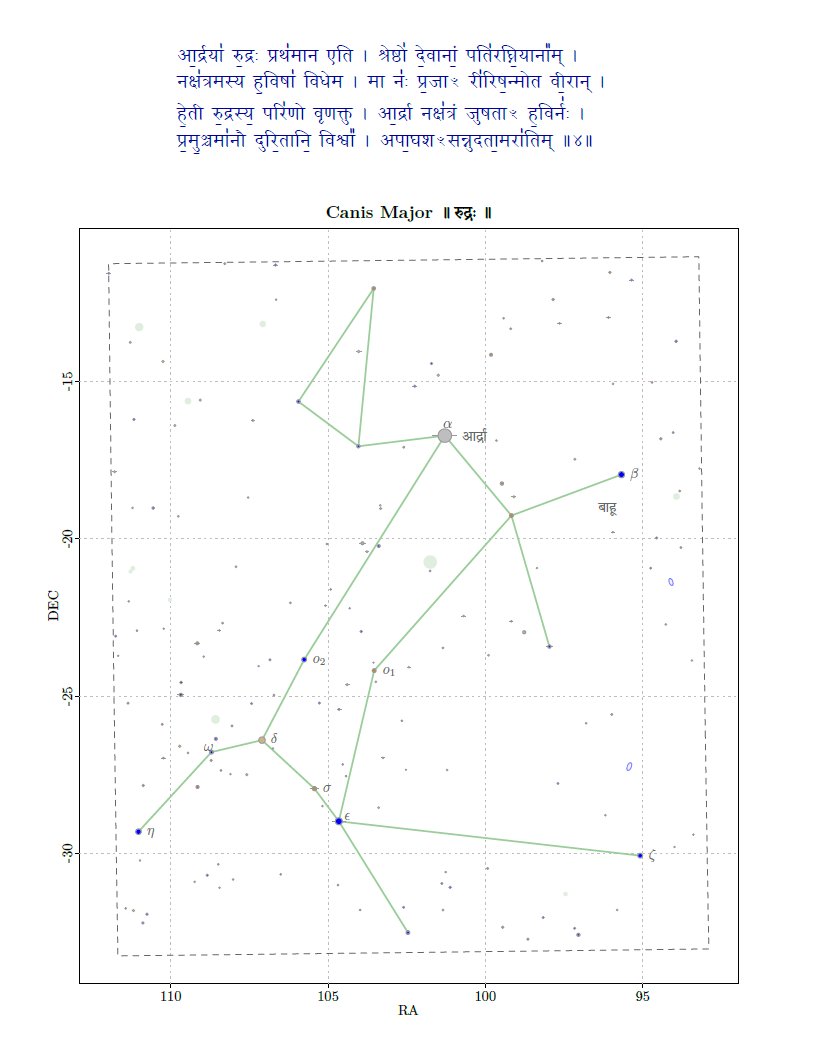
The next 3 nakShatra-s (mantra of only 1st shown) anUrAdhA; jyeSThA and mUla/vichR^itau are parts of the constellation of Scorpius. The glorious constellation in midst of the Milky Way. It is notable that if mUlam is root the vishAkhe are the dual branches. jyeShThA could mean 

the foremost or the trunk. Thus it is possible that in old Aryan uranography the whole Scorpius-Libra complex was seen as a tree rooted ay the nether end of the equinoctial colure. This probably gave rise to the vaiShNava concept of the viShAkhayUpa mentioned in the pa~ncharAtra
texts & illustrated in some of the early vaiShNava iconography & coinage from the kuShANa age. The redness of Antares is recognized as it is termed the second rohiNI in the taittirIya saMhitA. The constellation is a heap of riches for the lay astronomical observer. The 3 glorious
globulars M4, NGC 6144 and M80 leave unforgettable impression on anyone looking at them with reflector of even 6 in. I saw them with the 3in refractor -- the first telescope I made. Under the clear skies of Rajmachi, Mh I have seen M4 with naked eye (my eyesight was good then).
My first memories of this part of the sky are from when the Halley's comet passed by. Shortly thereafter, I tested my 3in reflector on NGC 6124 (the open cluster on the right) & M7 next to the mUla asterism. Both glorious sights for any small instrument
• • •
Missing some Tweet in this thread? You can try to
force a refresh





